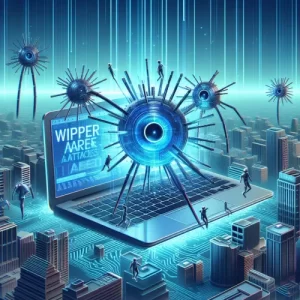Wiper-ware attacks, in a concerning trend, have seen a significant increase, as reported by cybersecurity firm Check Point, coinciding with heightened geopolitical uncertainty. Unlike traditional ransomware that seeks financial gain, wiper-ware aims to inflict maximum damage by permanently deleting data and crippling critical systems. This alarming development poses a serious threat to organizations across various sectors, making understanding and mitigating wiper-ware attacks a crucial cybersecurity priority.
What are Wiper-Ware Attacks?
Wiper-ware, also known as data-wiping malware, specifically targets an organization’s data and IT infrastructure with the intent of causing widespread disruption and destruction. Unlike ransomware, which encrypts data and demands a ransom for decryption, wiper-ware attacks leave no room for negotiation. They permanently erase essential files and render systems unusable, potentially causing significant financial losses, operational downtime, and reputational damage.
Why the Rise in Wiper-Ware Attacks?
Check Point attributes the surge in wiper-ware activity to the escalating geopolitical tensions witnessed in recent years. The Russia-Ukraine conflict, for instance, saw the deployment of various wiper-ware strains, highlighting the weaponization of cyberattacks in modern warfare. This concerning trend underscores the vulnerability of critical infrastructure to cyberattacks during periods of geopolitical instability.
How to Protect Yourself in this situation ?
?
While the rise in wiper-ware attacks presents a real challenge, organizations can take proactive steps to bolster their defenses:
- Regular Backups: Maintaining regular and comprehensive backups is critical for data recovery in the event of a wiper-ware attack. Implement a robust backup strategy with offline storage to ensure data remains secure even if systems are compromised.
- Patch Management: Systematically patching vulnerabilities in operating systems, applications, and firmware is essential to eliminate potential entry points for wiper-ware. Prioritize timely patching of critical vulnerabilities identified by security vendors.
- Endpoint Security Solutions: Deploy robust endpoint security solutions that can detect and prevent malicious activity, including wiper-ware attacks. These solutions should continuously monitor system activity and employ advanced threat detection techniques.
- Network Segmentation: Implementing network segmentation can limit the potential impact of a wiper-ware attack by isolating critical systems and data from less sensitive areas. This strategy minimizes the attacker’s ability to spread laterally and inflict widespread damage.
- Security Awareness Training: Regularly educating employees on cyber security best practices, including phishing awareness and social engineering tactics, can significantly reduce the risk of falling victim to wiper-ware attacks delivered through social engineering techniques.
By remaining vigilant and implementing comprehensive security measures, organizations can significantly strengthen their defenses against wiper-ware attacks and mitigate the potential damage caused by these malicious threats. Remember, proactive cybersecurity is paramount in today’s increasingly complex and threat-laden digital landscape.
Stay informed and protect your organization from the growing threat of wiper-ware attacks.
Don’t wait for your cybersecurity team to become hacked by work. Take action today!
Read more cyber security awareness-related news here:
-
KYC Fraud Prevention Tips: Dos and Don’ts to Safeguard Your Money
-
Indian Consumers Most Vulnerable to Fraud on Social Media Sites, Apps: Report
-
-
Your Data in 2024: Buckle Up for a Data Privacy Rollercoaster
-
Safeguard Your New Year: Fake Faces, Real Lessons: What Deepfakes Can Teach Us!
-
56% More Data Breaches, 0% Chill: Why India Needs a Future-Proof Digital Defense
-
Cybersecurity Predictions 2024: From AI Attacks to Geopolitical ThreatsWant to Learn Cybersecurity/ Ethical Hacking, visit: https://www.cctinternshala.in
